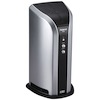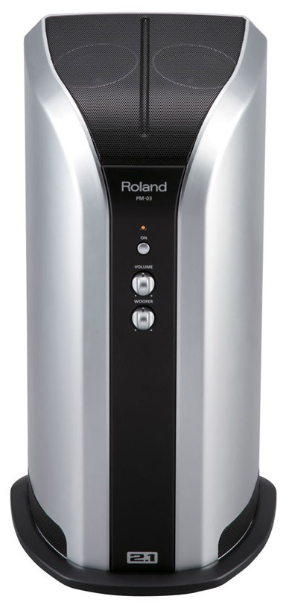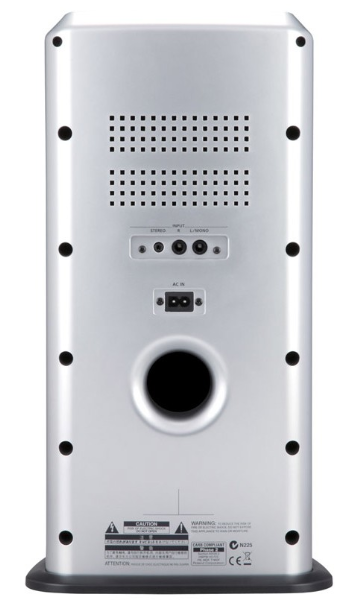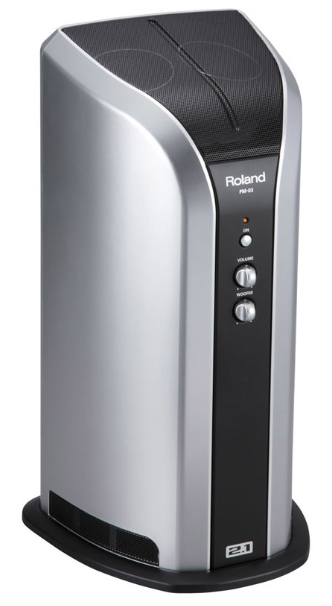ROLAND PM-03 DRUM MONITOR REVIEW
Posted on Wed 08 May 2013 in entries
You can read more reviews like this, listen to Tony’s productions, purchase synth patches and more at his personal site ->Tony Long Music.
ROLAND PM-03- INTRODUCTION
In September 2011, Roland updated their now discontinued PM-01 Personal Drum Monitor with the release ofPM-03; the first 2.1 channel monitor in the V-Drums series.
Personally, I have always found that amplifying electronic drums in a pleasing way can be a little tricky, mainly because most of the time, you're going to want it to sound as close to an acoustic kit as possible, with all those little details and nuances. However, there are naturally going to be differences - for one thing, all sounds from an electronic drum kit will be emanating from the same place, rather than from each individual drum as you hit it.
However, there are some great features of electronic drum kits that give them advantages over acoustic kits. Aside from the most obvious ones (it's easy to control the volume, you can model multiple kits in one unit, etc.), some electronic drum kits come with brilliant stereo effects (e.g. auto-panning), which can help to add additional twists to your performances. In such instances, your requirements for a drum amplifier will naturally be something capable of reproducing these stereo effects and that can cover all the necessary high and low frequency ranges, for a fantastically detailed sound.
The live electronic drummer has a complex requirement, needing to hear what they are playing, needing the rest of the band to hear the same and needing to project out to mix with the overall sound through the main PA to the audience. For this reason, Roland provides a range of personal drum monitors to suit varying demands. For this review I will be looking at thePM-03, which is the smallest in the range, but still provides a 2.1 setup. Whilst this has been designed more for the home user, I would like to evaluate its suitability as a personal monitor in a small live environment as well.
ROLAND PM-03- WHAT KIT CAN I USE THIS WITH?
Roland state that whilst this is the perfect match, aesthetically and aurally, for Roland’s HD-series V-Drums, all electronic drummers can plug into thePM-03as well. I intend to try this with Roland’s TD20 kit. As I normally only use my kit with headphones to avoid disturbing the neighbours (and the rest of the household), I'm very interested to hear how using thePM-03compares in terms of sound and the experience.
ROLAND PM-03- ONE UNBOXED MONITOR
Well, the first thing that I have to say is that the size of thePM-03is ideal with it being just less than 10 inches in diameter and just under 18 inches high. The actual measurements are: width 243 mm ( 9-10/16 inches), depth 236 mm ( 9-5/16 inches) and height 452 mm (17-13/16 inches). It weighs in at 6.0 kg 13 lbs. 4 oz.
TheRoland PM-03 comes complete with an owner's manual and a power cord. There is not much in the multi-language manual although I don't suppose there is much to say on it as it's not a complex product. However, I think Roland could have given some positioning diagrams for use with standard sized electronic kits. In fact, if they had thought about it, it would have been a great opportunity to advertise their range of kits with setup ideas. They do however show a very logical position of thePM-03when used with aV-Drums Lite kit.
Having said that, as I position it next to my TD20 kit, the most logical position for me seems to be on my left, next to the hi-hat. I like what Roland have done here with the two small 3 inch full range speakers, which are angled nicely up at me.
ROLAND PM-03- CONTROLS
There are very few controls to get to grips with. On the front, about a third of the way down, you have three simple controls with a small indicator above them. The first is an On/Off switch. Roland provides you with instructions of how to connect your drums to the amp and they inform you in which order you should switch everything on. They warn you that if you turn on the power in the wrong order, you risk causing malfunction and/or damage to speakers and other devices, so take note!
As I turned thePM-03on, the indicator lit up orange. Apparently, if 30 minutes passes without any signal being detected at the input, the indicator will change green and the unit will go into standby mode. The unit will then jump back to life as soon as audio is received from your drum module (or other equipment that you have connected) again.
The second control on thePM-03is a volume knob to adjust the volume of the device connected to the Input jacks at the back. The third control is the 'Woofer' knob, which simply adjusts the volume of the woofer. So, this will basically adjust the level of your bass frequencies. There is no EQ onboard to adjust any other frequencies, but I suppose if you wanted to, you can adjust the EQ on your drum module instead.
Around the back of thePM-03you will find the Input jacks and the power supply AC In connector, which you can secure. I am pleased that Roland has provided inputs to connect two stereo products, which can be used at the same time. In my opinion this is essential as you will be using the main Left and Right inputs to connect your drum module, and you may want to add in a drum machine or a CD player to play along with etc. Roland have provided standard 1/4” jack plugs as well as a stereo mini jack. And that is it for controls – I did say it will not take you long to get to grips with them.
ROLAND PM-03- PLUG AND PLAY
Ok, I have connected up and plugged in as the manual suggests. My first thoughts as I started to play on kit number 1, was that I did not like the sound, until I realised that I had not turned up the woofer to provide bass and warmth. The bass drum just does not sound right without this turned up, unless of course you want a low-fi sounding kit.
I worked my way through a diverse range of kits on my TD20, covering an assortment of acoustic kits (of different woods), percussion (from congas to triangles) and electronic sounds, which included anything from Simmons, claps, metal, noises and synth beeps. Overall I was very happy with the sound once I found the best balance between overall volume and the woofer volume. The cymbals were clear and crisp and the bass drum sounded good underneath them. Depending on the kit I selected, the toms and the mid-frequency instruments generally sounded ok, but I would have to say that I ideally wanted a bit more detail here. In this area I felt that my headphones provided a better sound. Also, the toms did distort a few times. Having said that, I have always thought that the weakest area of RolandV-Drumsare their toms.
I plugged in a drum machine and my experience was exactly the same with some slight distortion in the mid to low range. I think the main problem here is the compromises between bass drum and toms. To try and get the ‘thump’ sound you are looking for, you need to turn up the woofer, but as the woofer goes over the half-way mark you start to introduce some distortion for the toms.
I found that the stereo imaging of thePM-03 was very good, but it is obviously limited by the fact that the left and right speakers are extremely close together. Roland have done a good job here when you take into consideration the size of the monitor, but I think even at this early stage, I can already conclude that thePM-03is best suited to the home environment. For this purpose the power output is ideal and the construction and looks also lend itself to the home setup.I think that if you want something for live playing, then you will need more power and I would suggest that you look at theirPM-30set up, which boasts a 2:1 design with a 100 Watt 12 inch woofer and two individual 50 Watt satellite 4 inch monitors that clamp to your V-Drum stand or equivalent. For even larger venues I would look at using a small PA system just to monitor the drums.
ROLAND PM-03- CONCLUSION
ThePM-03is a great and inexpensive way to amplify your RolandV-Drumsor any other electronic kitor percussion setup in a home environment and it is very easy to set up and get playing. It is a slim, smart looking unit, but its construction is not made for the road. I would therefore not recommend thePM-03for live use.
I feel it is a little bit of a shame that the toms and mid-frequencies do not sound as good as the rest of the kit but you have to take into consideration the size of the speakers and the cost of this monitor. If you really want that extra power, then I would suggest perhaps theRoland PM-10and better still thePM-30, which I have mentioned above. However, you will have to consider the extra floor space that these will take.
Personally, I think if you have a Roland HD-1 or HD-3 kit to practice at home, then thePM-03is ideal for you. It fits in centrally to your hi-hat and bass drum pedals, looks an integral part of the kits design and I am sure this is what Roland’s design team intended.
For more information on theRoland PM-03 Personal Drum Monitor, click the link below or give us a call on 01202 597180.



